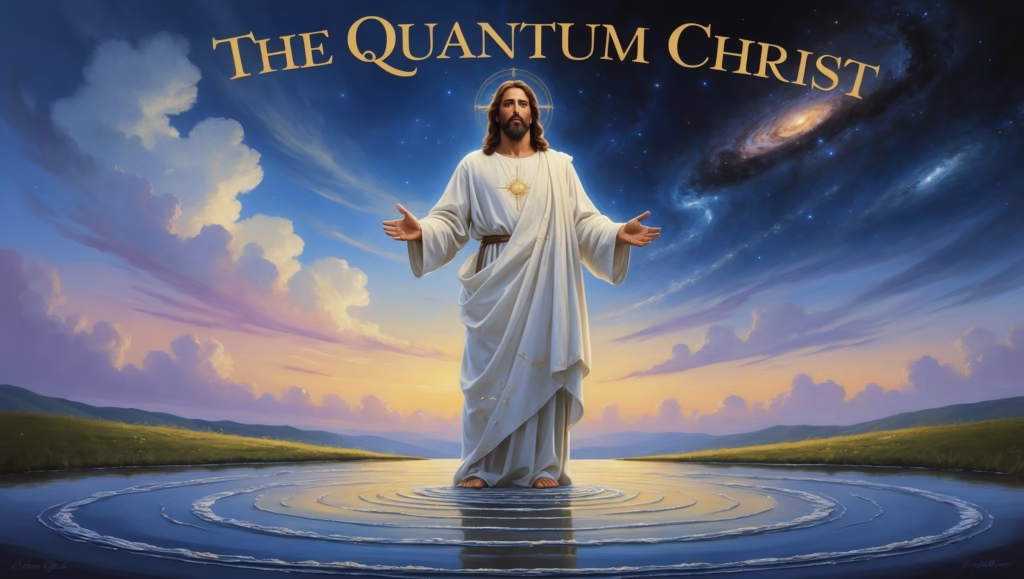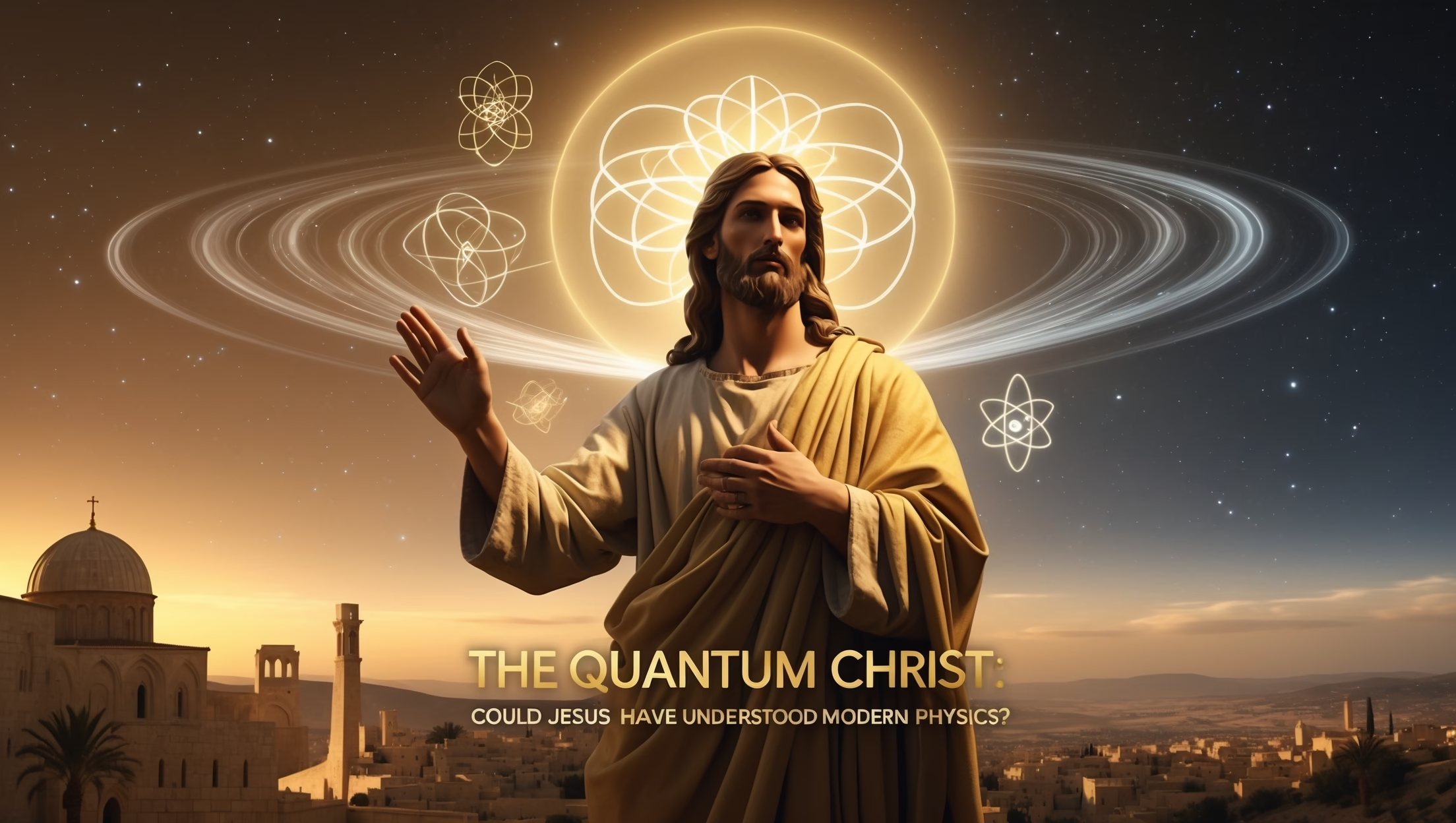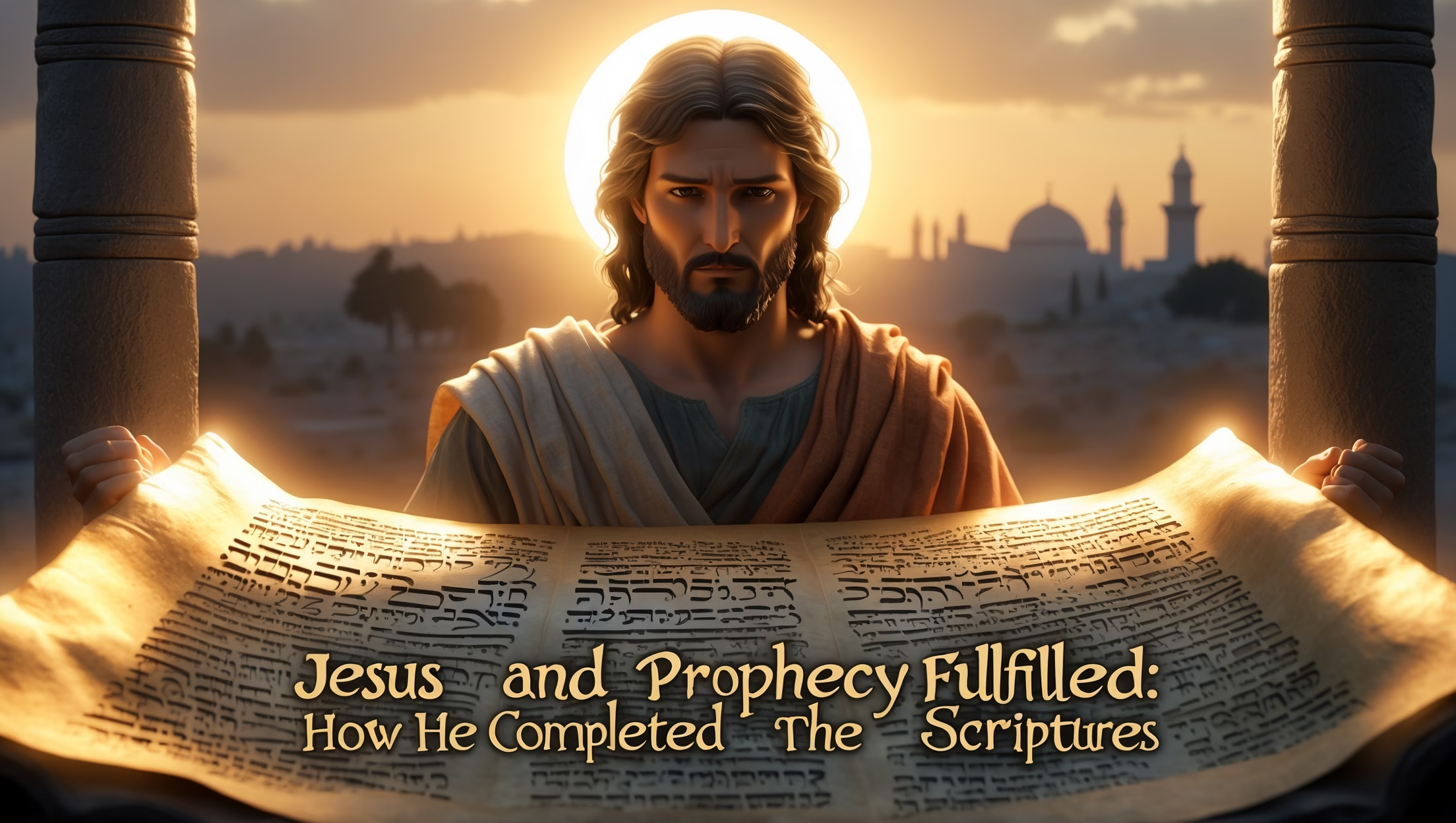“Truly I tell you, before Abraham was born, I AM.” (John 8:58)
This startling declaration from Jesus suggests a perception of time and existence that transcends ordinary human consciousness. For centuries, theologians have wrestled with the paradox of the Incarnation—how the eternal Word could inhabit the limitations of a human mind while retaining divine omniscience.
But what happens when we bring this theological puzzle into dialogue with modern physics? Could the Creator, embodied as a first-century rabbi, have grasped concepts like quantum entanglement, multiverse theory, and relativistic spacetime—and if so, how would such knowledge manifest in His teaching and miracles?

1. The Paradox of Omniscience in Flesh
The doctrine of the Incarnation presents an extraordinary tension:
- As the Logos (John 1:1-3): Jesus is the divine ordering principle of the cosmos, through whom all matter and energy exist.
- As a human carpenter in Nazareth: He lived within cultural, linguistic, and educational constraints of first-century Palestine.
This duality raises the “Kenosis Question” from Philippians 2:7—did Jesus empty Himself of some divine knowledge to live authentically as a human, or did He simply choose not to reveal certain truths?
If the divine mind was fully present, it could encompass realities only formally articulated millennia later:
- Quantum entanglement: “Spooky action at a distance,” akin to Christ’s simultaneous presence with believers globally.
- Multiverse theory: Resonating with the theological vision of “many rooms” in the Father’s house (John 14:2).
- Relativistic spacetime: Hinted at in His statements about existence before Abraham and His appearances after the Resurrection.
2. Evidence for a Scientific Mind
Precision in Creation
As the Logos, Jesus is not just a witness to creation—He is its architect:
- John 1:3 describes Him as the organizing principle of quantum fields, the unseen frameworks beneath particles and forces.
- Isaiah 40:12 poetically depicts God as “measuring the waters in the hollow of His hand”—a metaphor uncannily aligned with dimensional analysis in modern physics.
Miracles as Quantum Events
If miracles are seen as natural laws overridden or transcended by their author, they align intriguingly with quantum possibilities:
- Water into wine (John 2:1-11): Rapid molecular restructuring without intermediary processes.
- Walking on water (Mark 6:48-50): Manipulation of fluid dynamics and surface tension.
- Resurrection body (Luke 24:36-43): A form capable of non-local quantum tunneling—appearing in locked rooms, yet physical enough to eat food.
Parables with Hidden Scientific Depth
Even Jesus’ metaphors sometimes carry scientific resonance:
- Yeast in dough (Matthew 13:33): A miniature chemical reactor, transforming its environment through exponential reaction.
- The seed that dies to live (John 12:24): A poetic nod to energy transformation and matter cycling in biology.
3. Objections and Mysteries
Not all scholars are comfortable with reading modern science back into ancient texts:
- Cultural Containment Principle: First-century audiences lacked vocabulary for “quarks” or “Planck length.” Any deeper truth would have been expressed in culturally resonant forms—parables, metaphors, and signs.
- Kenosis Debate: Did Jesus voluntarily limit His access to divine knowledge during the Incarnation, functioning cognitively as any other human of His time?
- Revelation Timeline: Scripture often reveals truths progressively; perhaps scientific understanding is a gift meant to unfold through human curiosity over millennia.
4. Modern Implications: Faith Meets Physics
For Christians in STEM fields, Jesus as the Quantum Christ offers profound theological and professional integration:
- Quantum Vacuum Flux parallels the theological concept of creatio ex nihilo—creation from nothing.
- Nonlocality mirrors the transcendent, borderless reality of prayer, where distance does not limit connection.
- Observer Effect resonates with Proverbs 23:7 (“As a man thinks, so is he”)—our perspective actively shapes experienced reality.
Such analogies don’t reduce faith to physics or physics to faith; rather, they hint that both speak of the same underlying truth from different vantage points.
5. The Verdict: Beyond Equations
Could Jesus have explained Schrödinger’s equation to Peter or discussed the Copenhagen interpretation over bread and fish? Perhaps—but such knowledge may have been irrelevant to His immediate mission. His mastery over the laws of physics would not necessarily manifest as technical instruction, but as embodied authority:
“In Him all things hold together.” (Colossians 1:17)
Rather than holding knowledge about the universe, Jesus holds the universe itself—its constants, its quantum uncertainties, and its vast unfolding spacetime—within His being. His miracles, teachings, and very presence were less about revealing physical formulae than about reuniting creation with its Creator.
Conclusion: The Physics of Love
If modern physics seeks a unified field theory explaining all forces, Christian theology already points to one: love. In the person of Jesus, divine consciousness engages the material world at every scale—from the smallest quantum fluctuation to the largest galactic cluster.
The question isn’t just whether Jesus could have understood modern physics; it’s whether modern physics is slowly learning to articulate what Jesus already lived: a reality in which matter, energy, time, and relationship are inseparably entangled in the mind of God.










